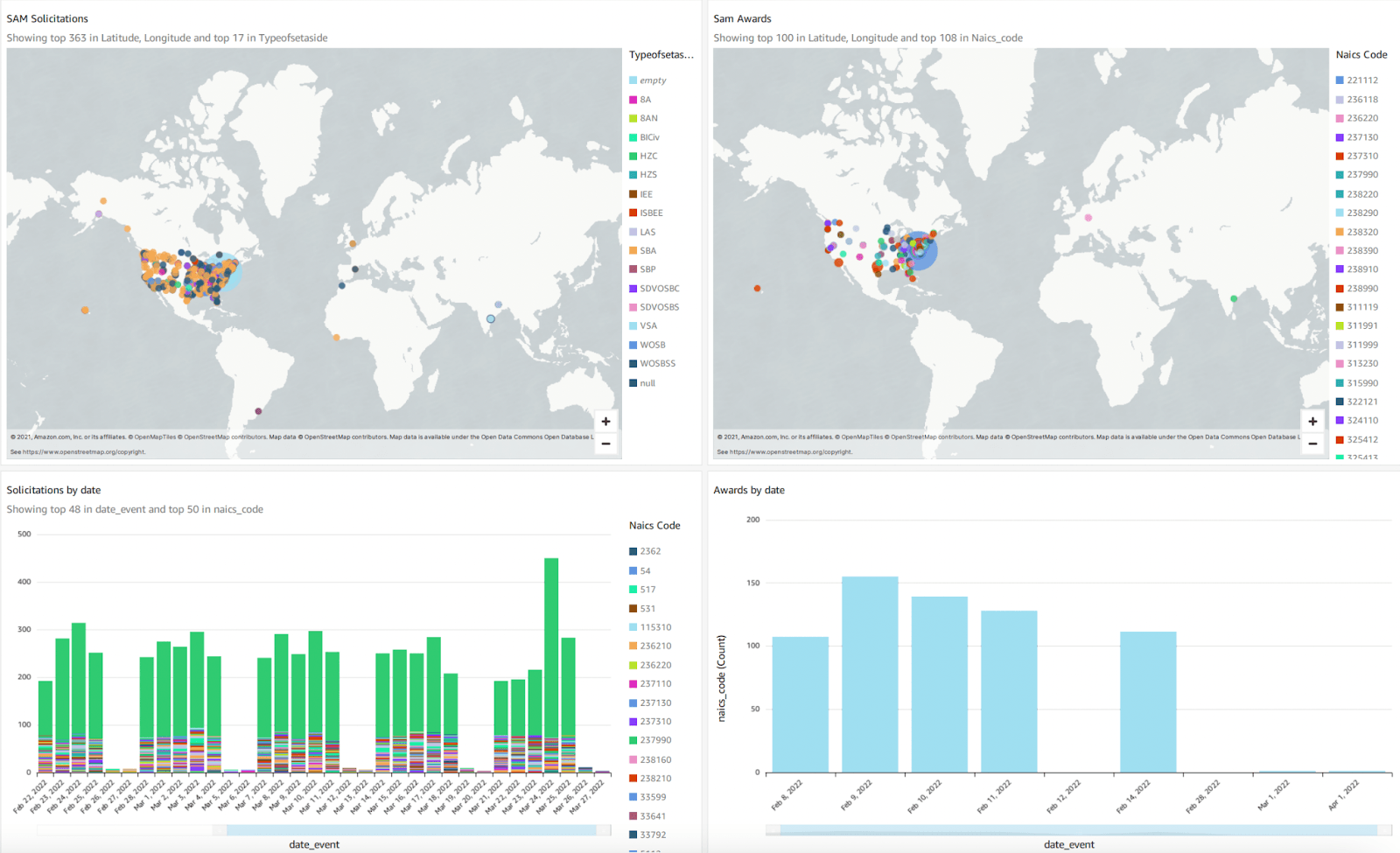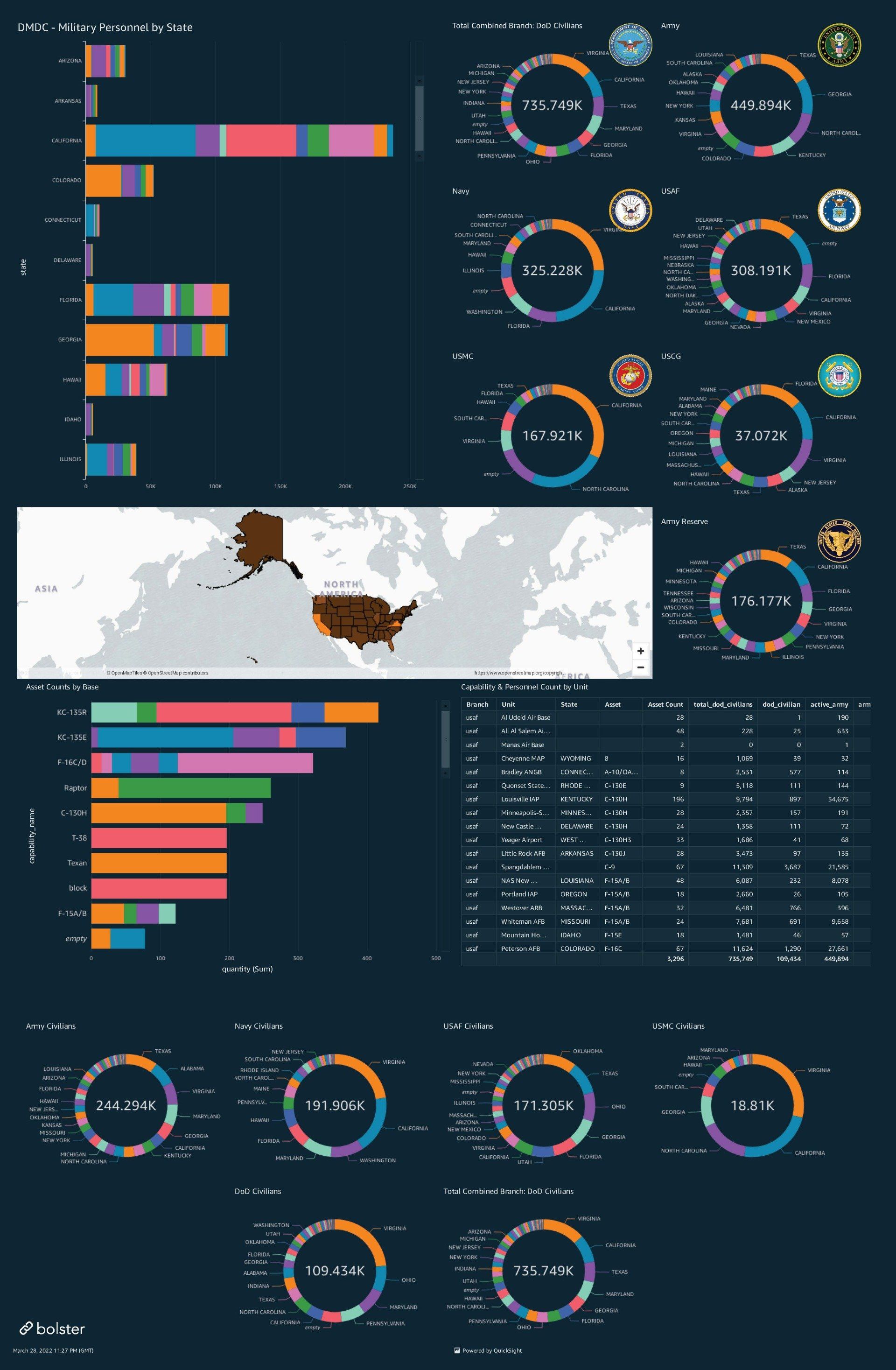Share
Discover new procurement and market sizing opportunities with Bolster
One of the ways that Bolster is supporting national supply chains is by leveraging our system for procurement and market sizing analysis. The idea here is to democratise access to government procurement systems for small-medium businesses (SMB) to improve the quality of solicitation responses for governmental contracts and improve the return on investment for taxpayers.
With that goal in mind, we’d like to introduce Project Quartermaster, a data analysis and alerting framework built on SMAQ specifically to support companies interested in more effectively selling into central governments without needing to hire someone to monitor multiple separate tender management systems.
With Quartermaster, our SMB and Enterprise customers can use a simple dashboard to discover and understand current and past procurement solicitations and awards and configure alerts when new solicitations are offered that are relevant to their business.
For example, maybe my enterprise makes and sells engine rotors, and I’d like to receive an email whenever a relevant solicitation occurs within my state and an SMS message when a contract is awarded.
Once per week, I use the natural language interface to explore new rotor solicitations for fit and feedback to a machine learning model to refine matches. I certainly don’t have the margins to employ someone to stay on top of archaic tender listings in hopes of landing my first contract, but I would pay $199/month to dip my line in the water in hopes of landing a big fish.
Although we think Quartermaster is a pretty cool application of SMAQ, web interfaces and alerting are nothing new, so what’s the Bolster difference? The answer lies in the event-driven architecture our integrations run, combined with Bolster’s SMAQ data model, applied to the procurement data.
Once in event form, each data stream may be combined with other data for events relating to conflict, deployment, and policy based on updating open-source information. When combined, these data interact and create synergies that allow for a more nuanced understanding of the opportunity landscape, allowing companies to gain a competitive advantage through foresight. Consider the below base Quartermaster dashboard image, which shows current and historical U.S Federal contract award data coloured by the domain of the award (NAICS Code).

An example of an insight derived from this analysis might be that there have recently been 51 separate awards for five categories of engine manufacturing at a facility based in Cleveland, Ohio, for hundreds of millions $USD.
For engine manufacturers like the one mentioned earlier, access to this opportunity at the earliest possible point is critical to winning the award.
The Bolster difference becomes even more clear when we add additional datasets to the picture to gain further context.
In the case of procurement data and analysis, our beta customer was keen to better understand how these trends intersect with historical federal investments into things like military equipment (capabilities) and duty stations (personnel counts) to better understand the market size of emergent federal opportunities.
To provide this context, we bring in data related to the number of personnel from different service branches present in each state (Army, Navy, Air Force, etc.), alongside the corresponding bases and capabilities present in by state (KC-130 Tanker Planes, F-22 Raptor Fighters, etc.). This combined data helps us better understand how these procurement activities fit the bigger picture and how we might position our pre-sales or product efforts to meet those needs.

So what? I could do all this with several software tools.
While this example of a SMAQ workflow applies to market sizing and sales targeting applications, the utility of this data modelling and fusion methodology is manifest, and the lift required to adapt it to additional domains is minimal. In contrast to other analytical platforms and frameworks where additional sources of data tend to bog down the analytical process behind inconsistent abstractions, arbitrary access controls, and an assumed familiarity with the data dictionary on the part of the user, SMAQstack is designed to empower the user to define their own heuristics for discovery.
Whether they prefer SQL, Pandas, Dashboards, notifications, or natural language, our stack can cater to any interface or user type. The same is true for our automation tooling, which may be accessed through a mobile/web application or as scalable APIs with usage-based pricing.
SMAQ allows enterprise to more effectively collaborate around their highest value assets, including those enterprise users with the highest context and a low tolerance for wasted time - its operators.
If you have enterprise datasets that aren’t generating enough value for your operators - and you want to give it the old “kick in the guts” - get in touch. Alternatively, if you are interested in selling into the national government space, reach out, and we can put you on the list for our Quartermaster BETA.
Share: